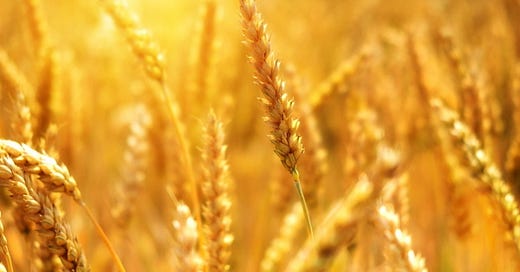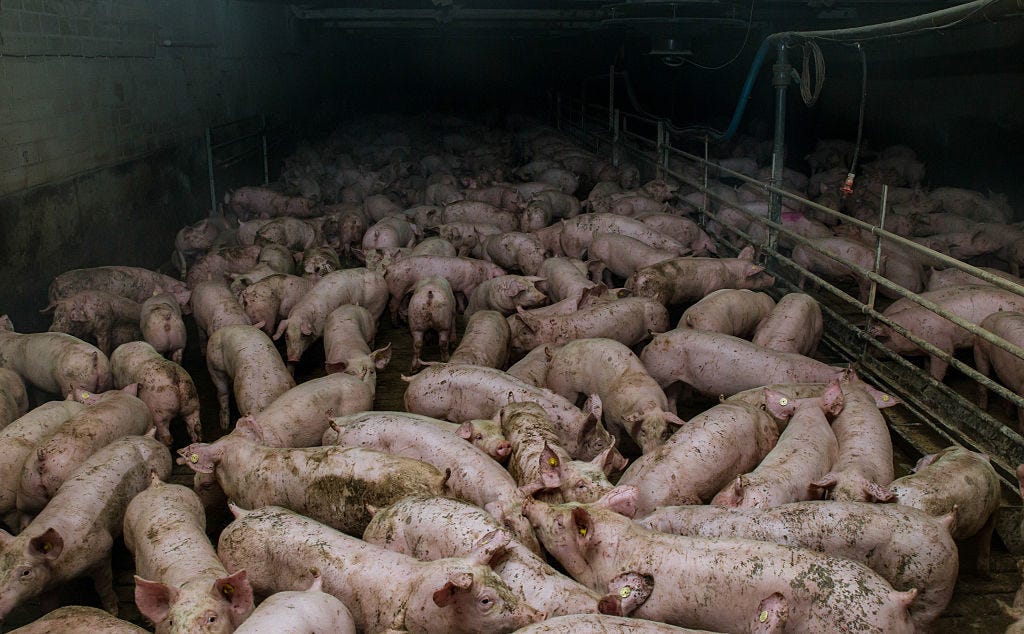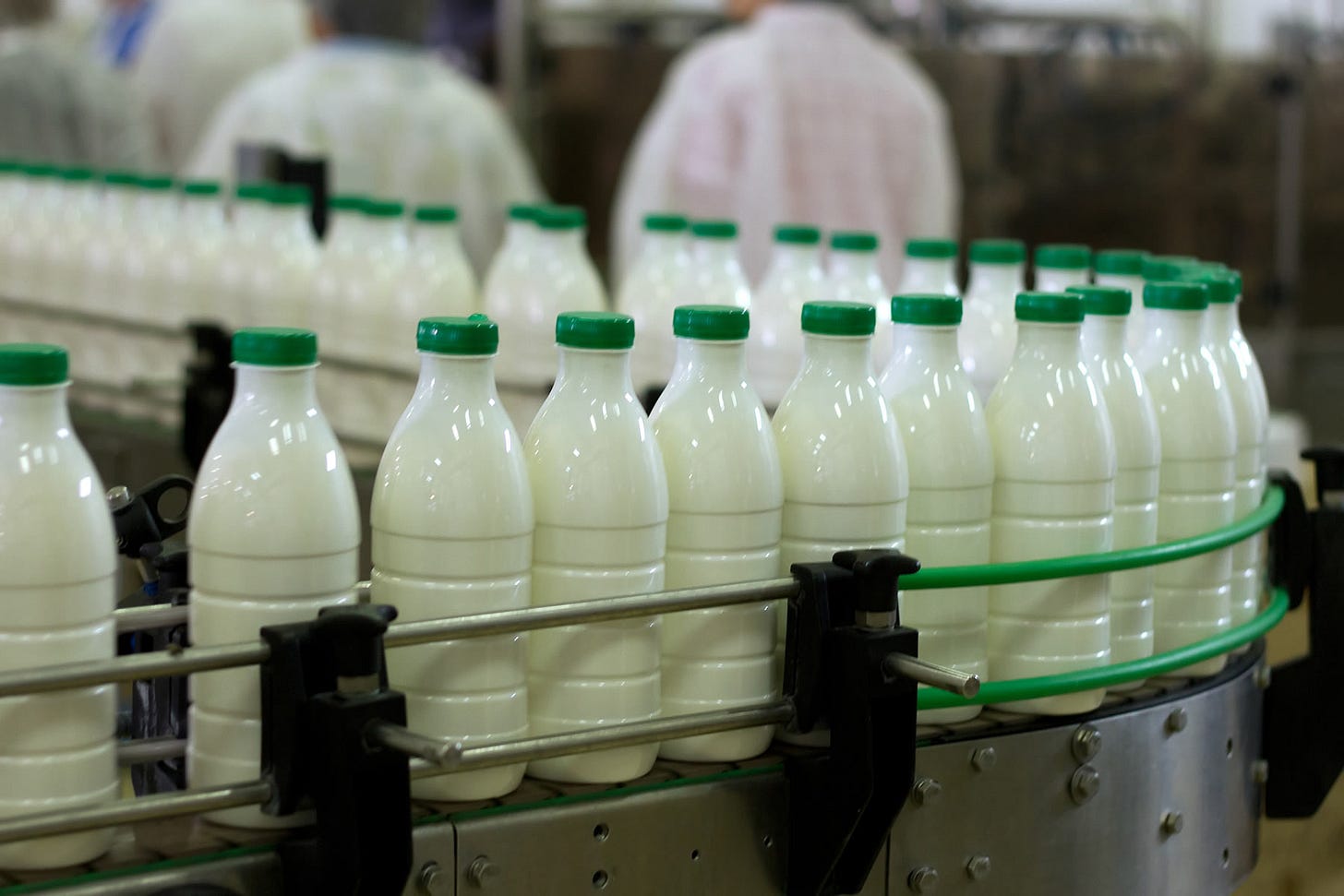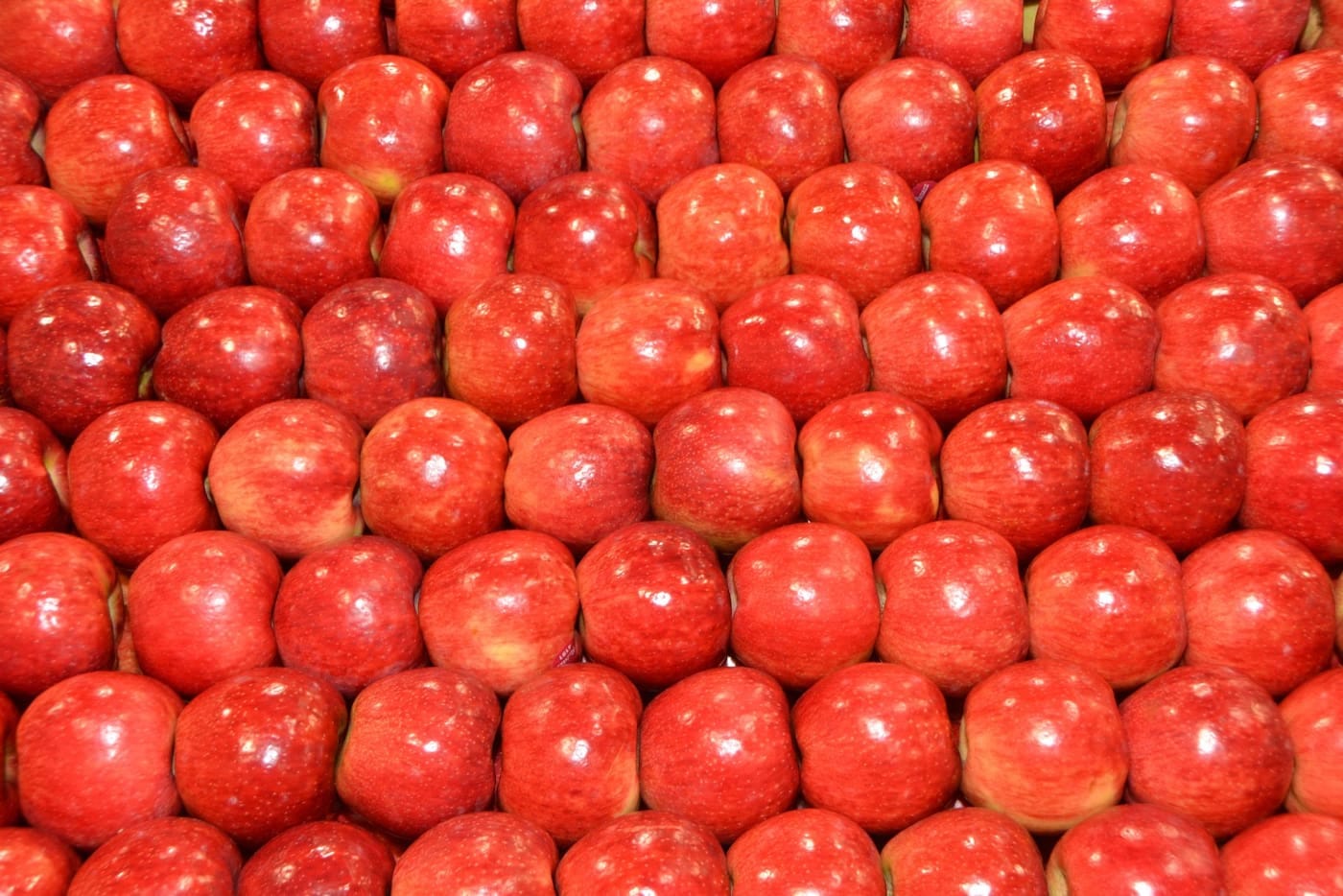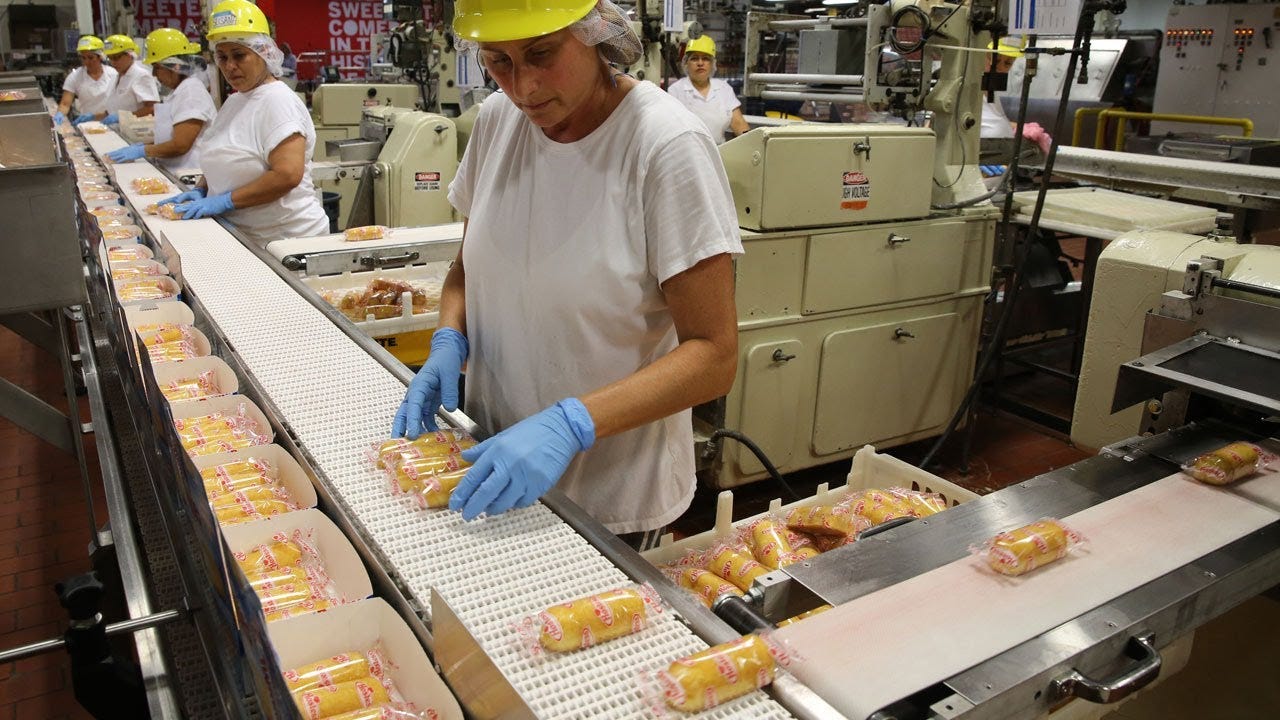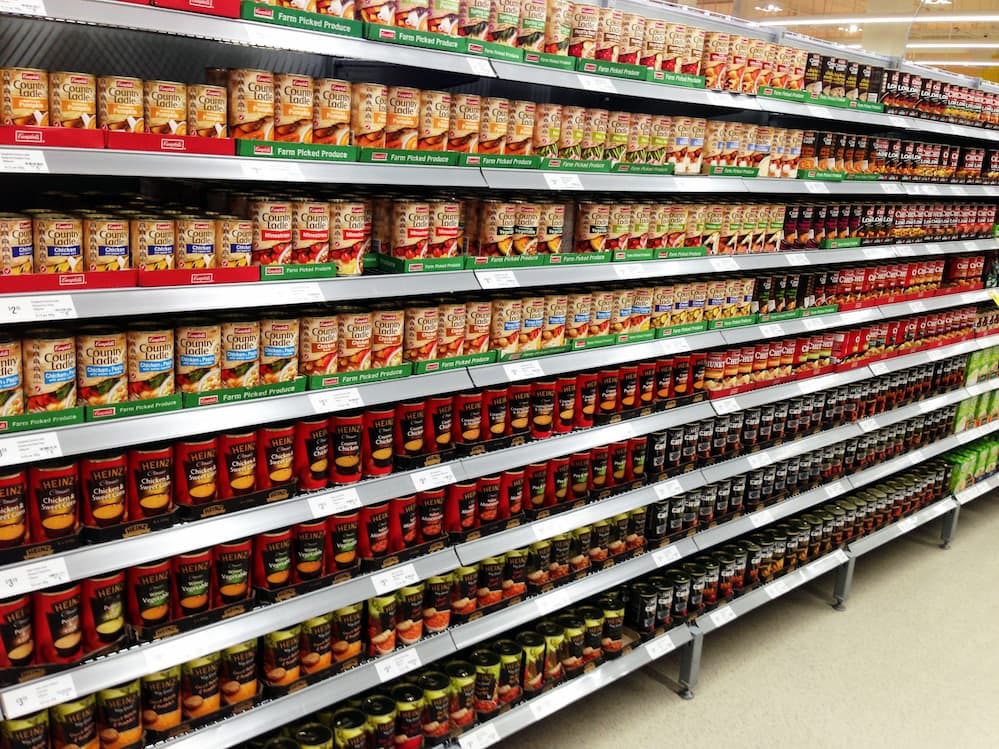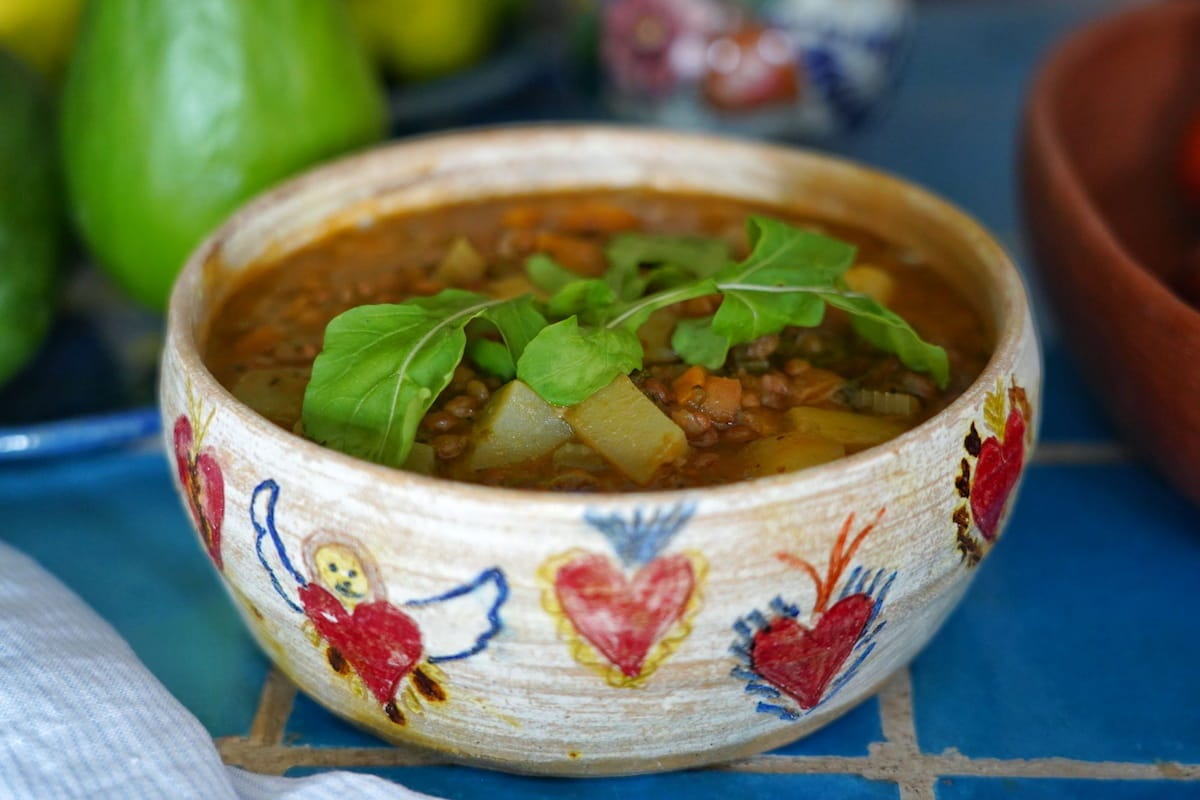What's wrong with industrial food
What has our food supply done to us? And how did our food get so bad?
Modern industrial food is literally killing us.
In the United States, 42.5% of the adult population suffers from obesity. Nearly three-quarters (73.6%) is overweight. Six out of the top seven leading causes of death are diet-related.
Our food is ruining our lives, and then ending our lives early. But why?
The catastrophic decline in food quality began more than 200 years ago with breathtaking improvement.
The Industrial Revolution, which would transform the lives of billions, was really a series of smaller, mutually reinforcing revolutions: The industrial energy revolution, the industrial transportation revolution, the industrial chemicals revolution, and so on. One of these was the industrial food revolution.
From around 1800 to about 1950, all of the major food problems that had plagued mankind for centuries were largely solved by industrialization, at least for people in the minority of countries that industrialized during this period. Famine, food-borne illness, lack of food variety, basic nutritional deficiencies among the poor and other problems were largely eliminated for millions.
Agriculture machinery, chemicals, railroads and trucks, factory assembly lines, refrigeration, pasteurization, homogenization, sterilization and other industrial-revolution innovations drove down the cost of food, and increased nutritional safety and variety. Lower food costs, plus supermarkets and household appliances meant people no longer had to spend most of their time paying for, acquiring or preparing food. Combined with advances in medicine, lives became longer, healthier and better.
What happened to the food industry between 1950 and today?
From the beginning, the industrial food revolution turned food into a product. Like all consumer products, food now had to constantly evolve into a better product: cheaper, safer, more reliable, and more long-lasting. This evolution involved gradual changes in the actual biochemistry of what we're putting in our mouths. But while the food keeps changing, our bodies don't. With each passing year, the food supply becomes less compatible with human biology.
We define industrial food as food modified for factory farming, factory processing, mass distribution or mass marketing. Industrial foods are those that have been changed to satisfy the demands of the consumer marketplace.
One of the many false assumptions about industrial food is that, well, food is food, and it doesn't matter if a computer-controlled machine mixes the raw ingredients together in a factory or a cook does in a kitchen. What's the difference? The difference is not the mixing, but the myriad changes made to the food to optimize it for the overall industrial process, changes that are largely unknown by consumers.
Most foods are "modified" or "processed" at some point. The question that separates industrial from traditional foods is the purpose of those modifications. Traditional modifications (for example, pre-industrial domestication) tend to improve the taste, health qualities, digestibility and long-term storage of foods. Grains are modified to make bread, for example. Olives are processed into olive oil. The food is altered to make it more edible, nutritious and desirable, as well as storable. Foods have been "processed" for millennia.
Before the industrial revolution, the purpose of food processing was to improve the quality of the food. But the highest purpose of industrial processing is to lower the cost of food.
Food companies want to maximize profits. Food consumers want to minimize costs. Food manufacturers are in an endless, hotly contested race with other companies to make more money by offering cheaper food.
Just like computer software or cars or any other industrial product sold in the competitive marketplace, there has been constant innovation in industrial food processing to drive down costs. Low cost is achieved by optimizing absolutely every aspect of food manufacturing, including seeds, soil, farm equipment, harvest schedules, trucks, factories, additives, processes, packaging and more. Another strategy for lowering costs is to offshore the production and processing of foods to China or other countries with low production costs and lax food-safety regulations, or simply buy the ingredients from companies in countries where the prices are lower.
Modifications to food begins before seeds are even planted. The first part of the industrial-food process is the selection of raw ingredients. Almost every food type originated with massive variety -- literally thousands of species of, say, apples or wheat. But industrial processing tends to favor only one or a small number of species, which have been heavily hybridized, cultivated or genetically modified to make them better for modern food processing systems. If you buy an apple pie at the store, it's made from single modern species of apples and wheat that didn't even exist 200 years ago.
Industrial processing and mass marketing dictates ingredient selection choices. Modern wheat is favored for bread-making over other grains because of its higher yield, machine thresh-ability, super high gluten content and other reasons. Specially bred dairy cows are favored over, say, goats, because they produce a lot more milk and can be feasibly kept in pens and a host of other reasons amenable to mass industrial processing, even though goat milk is far more compatible with the human digestive system. Corn and soy are chosen as the universal "fillers" for processed foods, because they're super cheap to grow, in part because US growers receive government subsidies to grow them.
The most extreme modifications are made in the lab. Biotech company scientists custom-tailor the genetics of seeds in ways that used to be only science fiction. Fish genes are grafted into strawberry DNA to reduce crop loss from frost, for example. Corn and potatoes are altered to manufacture their own toxic pesticides. Many of these designer crops are created to be wholly dependent upon a specific brand of herbicide or insecticide. Produce has also been hybridized and genetically modified for uniformity, blemishlessness, durability for transportation and other qualities that boost the salability of food. As with all industrial food innovations, these crops have been transformed into a better product to sell, and not a better food to eat. And they look better to the uninformed consumer than organic produce, with its blemishes and variable shapes and sizes. Despite looking better, they are far inferior, nutritionally. Since the 1950s, the vitamin and mineral content of produce generally has declined markedly.
The cause in this decline in the nutritional quality of fruits and vegetables, according to one article in Scientific American, is the "preponderance of agricultural practices designed to improve traits (size, growth rate, pest resistance) other than nutrition."
As the product gets better, the food gets worse.
GM technology is great for the companies that create them. Genetically modified foods are patentable, for example, which confers a marketplace advantage on the r holder. And seeds genetically modified to require specific brands of herbicide or pesticide lock in customers for those products.
Genetically modified crops have been aggressively introduced into our diet only in the past 25 years or so. According to the USDA, the percentage of soybean acreage devoted to GM soy rose from less than 10% in 1996 to more than 90% in 2010. GM corn acreage rose from almost zero to more than 2/3 of all acres. The vast majority of processed packaged foods contains one or both of these GM crops. Farm animals are usually fed GM feed. Vitamin pills are often made from GM crops. GM foods have pervaded the entire industrial food supply, at least in the United States where they are legal and unlabeled.
Adults today are feeding their children foods that didn't exist when they themselves were children.
Once the particular type, species or "brand" of seed has been planted, the growing or raising of industrial foods is typically done in a way that optimizes the ingredients for industrial processing. Just a century ago, farms involved the raising of a variety of crops and animals in a symbiotic ecosystem where the waste from animals fertilized the crops, and some of the crops fed the animals. Crops were rotated to maintain soil health.
Industrial farming involves plots of land growing a single crop or monoculture — often genetically modified and crop-dusted with an airplane spraying hundreds of gallons of poison all over the food and the soil. The soil becomes depleted and over time and becomes lifeless and the process, the ecosystems become imbalanced or completely broken. These practices are not done for healthier or better-tasting food, but because that's how the agribusiness industry get the maximum weight of produce out of each acre of land at the lowest cost. But while this is how factory farming maximizes their profit margins, there is an enormous and irreparable cost to the environment, which comes also at the expense of farm workers’ and consumers’ health.
Fruits and vegetables destined for industrial processing are typically harvested well before ripening, so the food can survive the long journey to the factory, where it may be ripened with ethylene gas. The same goes for a lot of the produce sent to supermarkets.
Before produce even gets to the factory or supermarket, it has already been modified aggressively. As a result, according to several studies, the overall concentration of nutrients in foods has declined dramatically in the past 50 years. The protein concentration of wheat, barley and corn is way down. The mineral content of wheat and many vegetables is down. This general trend makes intuitive sense. As producers successfully find new ways to get more pounds of food out of the same acre of land, you might expect the nutritional quality to decline with rising yields.
But it's at the food processing and packaging plant that the deep modifications take place. Of course, different kinds of foods undergo different modifications, alterations and transformations in the manufacturing process. One nearly universal outcome is that food usually has to be sterilized or nearly sterilized before leaving the factory.
A typical food manufacturing facility involves pipes and vats, bins and kettles of such size and complexity that it's impossible to keep these things clean. Because food is processed in mass quantities, bacterial contamination can spoil huge amounts of food. And because industrial food will usually be stored for long periods of time, any bacteria would have weeks or months to develop into a full-blown pathogenic danger. That's why many industrial processes require the pasteurization or sterilization of food before, during or after the bottling, canning or packaging stage.
Food sterilization can be problematic for health in two ways. First, it changes the food, destroying or altering the chemical structure of nutrients. Second, it turns out that human health needs the bacteria, fungi and other microorganisms that live on natural whole foods. Eating a diet of primarily processed foods can leave you with a compromised gut environment, which can lead to susceptibility to illness, allergies and other problems.
Because industrial food will be eaten when old, rather than fresh, food processors have to employ a wide range of tricks to "embalm" the food and prevent it from decomposing, as it naturally would.
We all know that when food gets old, it "goes bad." Food is transformed by bacteria, molds and enzymes, causing it to lose flavor, texture and color. Liquids and semi-liquids separate. The shape, structure and texture of food degrades. Because industrial food products will be shipped, handled roughly, kept at unpredictable temperatures and placed on shelves for weeks or months, all the potential damage to the product must be countered with additives. The food industry employs thousands of chemicals and compounds that act as preservatives, emulsifiers, stabilizers, anti-caking and anti-foaming agents, thickeners, color enhancers, flavor enhancers and others. Some of the unpronounceable ingredients on food labels are chemicals and additives that make old, stale food look fresher. Other additives don't have to be listed on the label at all. For example, cottage cheese, non-fat milk, sour cream and some ice cream brands are whitened with a potentially toxic substance called titanium dioxide. But you won't find that on the label because of a loophole in the regulations that enable its classification as a "manufacturing aid" rather than a food ingredient. Other loopholes allow companies to hide a huge number of ingredients single umbrella terms like "artificial flavors," even if the ingredient is not used to affect the flavor. The list of ingredients that can be legally added to wine without being disclosed on the label runs six pages.
Food products need containers, which are constantly being upgraded for lower cost shipping and storage, and increasingly made from plastic or plastic-lined cans. Plastic is cheaper than glass, less breakable and lighter, too, which brings down shipping costs. As with many industrial food innovations, plastic containers improve the product but degrade the food.
It turns out that chemicals in plastic containers can leach into the foods they contain. In the past few years, consumers have become aware of the dangers of substance in many plastics called Bisphenol A, or BPA. BPA is used in many plastic containers, and also in the plastic lining of many canned foods.
When BPA gets into food, and then into the body, the human endocrine system mistakes it for estrogen. Such anti-androgens, or anti-male hormone compounds, harm the health of women as well as men. Researchers are still working on how all this fake estrogen affects health, but it could be partly to blame for declining sperm counts in men, as well as have some link to cancer, diabetes and heart disease.
BPA isn't the only problem. Many different kinds of plastics have many other different chemicals and compounds that also disrupt the endocrine system.
Container makers often use a class of substances called phthalates, which make plastic containers soft and flexible. Phthalates leach easily into foods from containers because they're not strongly bonded to plastics. As the plastic containers age, they break away from the container and blend into the food, onto the surface of the outside of the container and even into the air we breath. These also disrupt the hormonal system, and have been linked to all kinds of health issues, from birth defects to obesity and even insulin resistance.
Both BPA and phthalates can be detected in the urine of just about every adult in America. Our bodies are saturated with these anti-androgen hormone disruptors.
Other types of industrial-food containers have similar problems. Swiss scientists discovered, for example, that the recycled cardboard used for factory-made breakfast cereal boxes contain enormous quantities of toxic chemicals that can leach into the food.
The differences between industrial and traditional foods are profound and many. Because industrial food has been so thoroughly modified, it bears almost no resemblance from a nutritional perspective to traditional foods.
Nearly all the foods available to consumers, from grocery stores, to restaurants, to vending machines to company cafeterias are industrial foods. Even cooking at home from scratch can involve industrial foods, in the form of modern wheat, industrially sourced and processed oils, pasteurized ingredients and other foods from the supermarket. Likewise, it's possible to make traditionally processed food products in factories – what matters is the degree to which foods have been modified for reasons other than taste and health.
Confusion about the difference between industrial and non-industrial food has led to mistaken conclusions about which foods are healthy, and which are not. In recent years, various food categories have been vilified as unhealthy. Meat, milk, grains, sugar and so on have been vilified by various health experts as categorically bad for you. But it turns out that only the industrial versions of these foods are bad. Wild fish and game, raw goat milk, ancient grains, raw honey – the traditional versions of these foods are super healthy in moderate quantities.
As I said previously, I define industrial food as food modified for factory farming, factory processing, mass distribution or mass marketing. Industrial foods are those that have been changed to satisfy the demands of the consumer marketplace. It's not the industrial processing that matters, but the modification of biochemistry specifically for that processing.
Industrial food doesn't taste good. It doesn't look good or smell good. It doesn't promote health. It doesn't make you feel good.
Industrial food is just cheap.
Recipe: Oaxacan Provencal Lentil Soup
As a Gastronomad (a nomad who travels for the love of food), my lifestyle is driven by passion for learning from and experiencing how others live, cook and eat around the world. All the different places I travel to influence the recipes I create.
My recipes are healthy and eclectic and can be described as a fusion of world cuisines. In the last 15 years, I’ve been inspired by the many cooks and chefs I’ve met around the world.
One of the things I believe sets the Spartan Diet apart is that cooking and eating is about maximizing flavor, quality of food and nutrition density. As you embrace this point of view, cooking is more joyful, adventurous and exciting in the kitchen exercising a sense of freedom and not being bound by the rules of conventional cooking. What’s the point of charred meat, blackened fish and burned brown butter when in the process you create carcinogens in food? Why do tomatoes have to be blanched and peeled before making a pizza or pasta sauce? There’s no need to do extra work to rob ourselves of the extra fiber. Cooking in a way that maximizes the health and nutritional content of food is better for our bodies. Food is necessary for providing us with sustenance with its nutrients. Our goal in the kitchen when we cook should be to keep food as fresh, flavorful and nourishing as possible.
As a cook, I’m very much influenced and fascinated by the many spices and herbs used in Mexican cuisine, and especially, Oaxaca cuisine; and by the rustic style and fresh ingredients of French country cooking or Provencal Cuisine. I also love Italian cooking -- making pizza and pasta from scratch is incredibly rewarding.
The most influential diet in my cooking is the Mediterranean diet. Having lived extensively in Greece, Spain, France, Italy, Turkey and Morocco have provided a greater understanding about the power of eating a widely diverse diet that includes more naturally fermented foods and meats, fresh sardines, nuts and seeds, goat and sheep cheeses and, of course, exquisite extra virgin olive oil.
Although a vegan diet does not provide sufficient nutrients to be optimally healthy, having been vegan for two decades taught me the power of eating more plant foods and the skills to prepare vegan food in a spectacularly tasty and crowd-pleasing way. It's an understatement to say that The Spartan Diet is a plant-forward diet. High-quality animal protein, though important for total health, takes a back seat to the world’s most nutritious plant foods — nuts, seeds, whole fruits, legumes, herbs, vegetables and more.
Since we’re currently living in Oaxaca, I’ve been cooking with Oaxacan ingredients and eating mostly Oaxacan food. But this week’s recipe brings together two continents.

